Physiotherapeutic procedures have long been used to treat almost all human organs and systems. In some cases, they are prescribed as a separate stage of treatment, and sometimes to enhance the action of medications or accelerate recovery after injuries or operations. One of the main directions in physiotherapy is the use of therapeutic currents. The positive effect of currents of a certain frequency and strength has long been studied, they are successfully used in the treatment of various ailments. The most popular and widely used type of electrotherapy is diadime therapy. This method is based on the use of diadynamic currents or currents of Bernard. The current data was given by the name of the French physicist Pierre Bernard. It was he who discovered the healing properties of the alternation of pulsed currents with a frequency of 100 and 50 IMP/min. We will tell you about how Bernard's currents are used in physiotherapy and what effect this therapy gives.
Content
How is diamotherapy carried out a procedure
Basic rules of diadime therapy
Diadinamotherapy uses special stationary devices, which are available in almost every physiotherapeutic department. The use of diadime therapy should be prescribed only by the attending physician. Even if the procedure is planned at home using portable devices of diadime therapy, the nature of the exposure, the intensity of currents and the duration of the sessions must be consistent with the specialist.
Modern devices, the so -called physiotherapeutic combines, are able to generate currents of various intensities and amplitude. Thanks to the alternation of their effects on the body, good results can be achieved. In addition, with the help of some combines, even laser and vacuum therapy can be carried out.
Basically, diamotherapy is carried out in a hospital or reference. The fact is that the cost of portable devices for this procedure is quite high, and they are not constantly used. That is why they are rarely bought.
Before starting the procedure, the patient must be inspected by a doctor as a physiotherapist who, having studied the anamnesis, prescribes a procedure. At the same time, he indicates the parameters of its implementation:
- Duration of exposure.
- The zone of exposure.
- Current parameters (current strength, amplitude).
- The number of procedure sessions.
As a rule, the session itself conducts a nurse, however, in difficult cases, it can be carried out with the direct observation of the doctor.
The procedure for conducting diaminamotherapy

Procedure and rules of the procedure:
- The procedure is carried out mainly in the lying position. However, with some diseases, diadime therapy is possible in a sitting position. Current is carried out through special electrodes of hydrophilic gaskets. To fix them on the patient’s body, sand bags or special locks are used. Hydrophilic gaskets are wetted in water or a medicinal solution, after which they are well squeezed.
- The location of the electrodes depends on the disease. The distance between the anode and the cathode should not be less than their cross section. Usually, a cathode is applied to the place of pain localization. Sometimes they use cathodes of smaller size to reduce the intensity of exposure. With a large area of \u200b\u200bthe pain of pain, the location on it is both anode and cathode. In this case, when half the time allotted to the procedure passes, they are changed in places. During the procedure, bifurcated electrodes are used on the upper or lower extremities.
- The location of the electrodes in the treatment of internal organs is transverse. With insufficient functionality of the organ, a decrease in the secretion of glands, inhibited motor skills over the effect of exposure, the cathode is placed, and with hyperfunctionality - the anode.
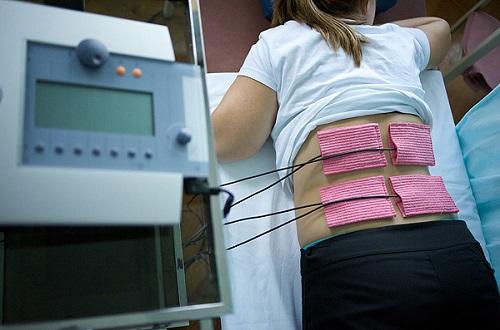
- After that, the nurse includes a device that supplies current to the electrodes. Currents of different frequencies have a different nature of exposure. So, a current with a frequency of 50 Hz provokes a contraction of the muscles of the skeleton, which leads to an improvement in blood circulation. Current with a frequency of 100 Hz has a inhibitory effect on the nervous system. This effect leads to the expansion of arterioles, which allows you to provide the best blood flow to tissues and organs. In addition, high -frequency current reduces pain.
- In some cases, the use of electrotherapy using Bernard currents is combined using drugs (diamophores). Electric currents due to the effect of the patient’s skin significantly enhance the effect of the drug, which can easily get into the skin and through small blood vessels into the bloodstream. Due to the activation of blood circulation, the necessary drugs are quickly tolerated throughout the body.
- During the diadine therapy, depending on the well -being of the patient, the current strength is adjusted. The appearance of strong pain is unacceptable. The feeling of light tingling or burning is the normal reaction of the body to the command of the procedure.
- After the end of the session, a slight redness may appear at the exposure site, which is the norm.

When conducting a diaminamotherapy procedure, the following general recommendations should be followed:
- The total session time should not exceed 10 minutes.
- The duration of one course of procedures is not more than 10 sessions.
- After the first course and before the second, the second should take a break of no more than 14 days. Otherwise, the effectiveness of procedures is reduced.
- The polarity of the electrodes should be periodically changed.
Indications and contraindications for diadime therapy
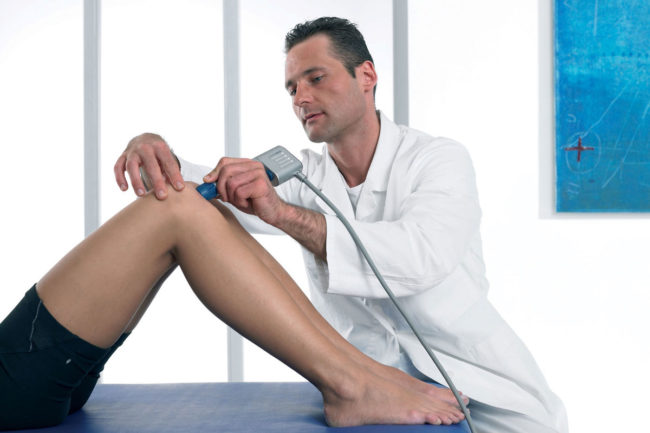
A large number of studies have shown that the use of Bernard currents is very effective in the treatment of many diseases. Indications for diaminamotherapy are the presence of the following ailments:
- Problems with the musculoskeletal system, namely arthrosis, osteochondrosis, arthritis.
- Digestive organs. A very good effect of this procedure is observed in the treatment of gastritis and gastroduodenitis, other diseases of the gastrointestinal tract.
- The action of DDT currents on the digestive organs leads to an improvement in the release of pancreatic secrets, normalizing the work and functional state of the liver. Due to the stimulation of the muscle work of the body, the work of the stomach and intestines normalizes.
- Respiratory organs such as neglected bronchitis, pneumonia, asthma.
- Gynecological problems.
- Hypertension, atherosclerosis of blood vessels, other ailments of the cardiovascular system.
- Rinita, sinusitis.
- Neuralgia and neuritis.
- The positive effect of Bernard’s currents on the state of the central and peripheral nervous system is the basis for the successful treatment of a number of neuralgic diseases, a decrease in their spastic manifestations, pain and convulsive syndromes.
- With the functional failure of muscle tissue due to various injuries, being in a penalty state, electrical stimulation using DDT is used.
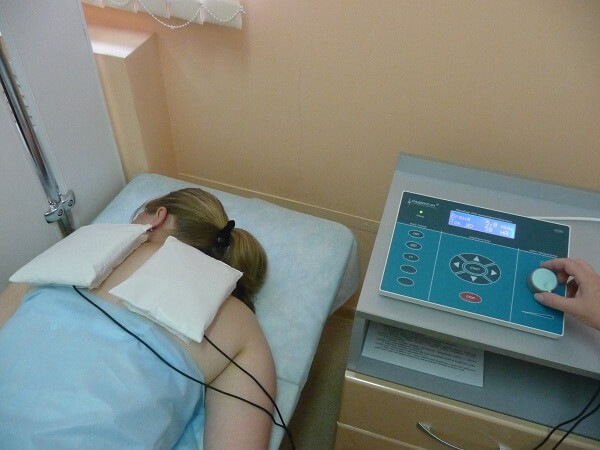
Although by nature, diadynamic currents are harmless to humans, their use has a number of contraindications. Diadinamotherapy is contraindicated in the following cases:
- The presence of oncological diseases in the patient, even at a staunch remission stage.
- Chronic inflammatory processes.
- Epilepsy disease.
- An allergic reaction to an auxiliary drug, which is prescribed for a session of diadime therapy.
- Vascular thrombophlebitis, even if there are no problems with the place of exposure.
- Tuberculosis disease.
- Violation of the sensitivity of the skin.
- The presence of abundant bleeding.
- The presence of wounds and suppuration in the field of use. If suppuration is not strong, then the procedure is carried out only when organizing the outflow of pus from the place of exposure.
- Implantation of steel objects in the body.
- Fractures of bones.
These pathological states during diadime therapy can deteriorate significantly. That is why the doctor must conduct an examination and survey of the patient before the session. It is not worth hiding information about the availability of contraindications to diadime therapy, as this can adversely affect further treatment.
Tips for diadime therapy

- The most pronounced physiological effect of diadinamotherapy appears in pain relief. This is especially important for stopping pain attacks with arthritis, arthrosis and other joint diseases. The mechanism of action of diaminamotherapy is the effect of currents on the central and peripheral nervous system of a person. During the procedure in the brain, the pain dominant is replaced by the dominant exposure. Due to this, the patient decreases the perception of pain. On the site of the peripheral nervous system, under the influence of various currents, the operation of pain receptors changes, which reduces the feeling of pain. Reviews of diaminamotherapy, as a method of combating pain, make it possible to judge the effectiveness of this procedure.
- To increase the therapeutic effect of diadime therapy, it can be used in conjunction with other physical procedures such as massage or exercise therapy. Carrying out the procedure in 30-60 minutes before physical exertion significantly reduces the pain syndrome.
- This procedure can also be carried out before thermal and water procedures. To relieve pain syndromes before diadime therapy, darsonvalization or ultrathotonotherapy is carried out.
The use of diadime therapy in children
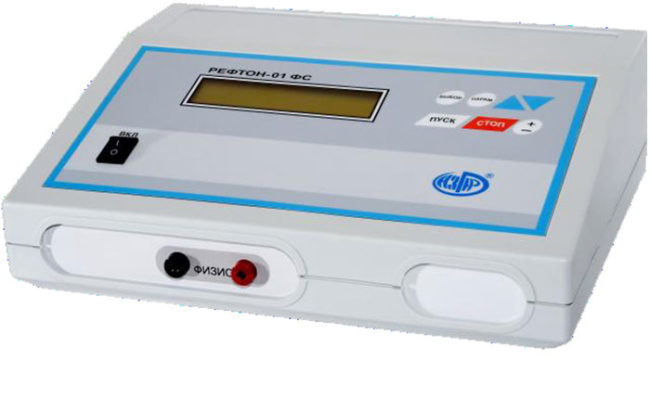
Conducting diamotherapy for the treatment of small patients is allowed only upon reaching 2-3 years of age. When diagnosing problems with the central nervous system, myostimulation is allowed at an earlier age, but only under the supervision of a doctor. The fixation of the electrodes on the child’s body is carried out only using bandaging, the use of other methods (Velcro, sand bags) is not allowed. The current strength increases gradually with the obligatory control of pain. The duration of the procedure is usually 30% less than for adults.


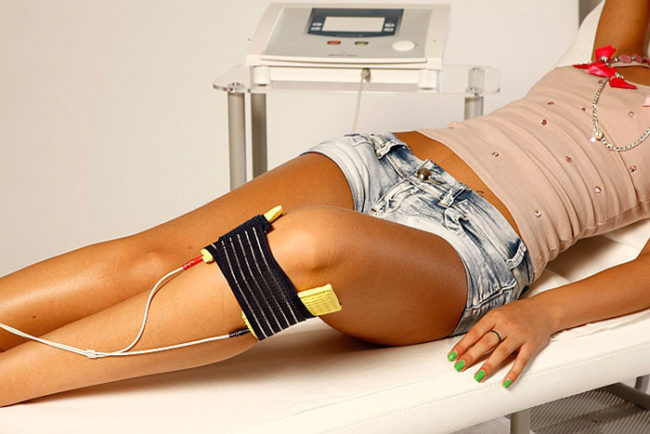







Comments
a couple of years ago, there was no side of metrogils from the same problem, there were no side effects ...
I’m not a fan of peeling at all, it saves from acne of metrogil, it also smoothes it ...
Great article! ...
I take the second course of the Capsules Climafite 911. The tides went very quickly. It became calmer, irritability went away and I sleep well ...
i also noticed - it is worth nervous, everything immediately affects the face. Therefore, I try to avoid conflicts and unpleasant people. Of the creams, I like Miaflow from wrinkles - smoothes not only small wrinkles ...